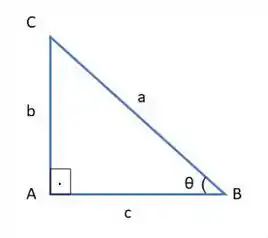Calcule
Passo 1
A função dentro da integral é:
Não parece muito familiar?
Na verdade a resolução pra esse tipo de função é chamada substituição trigonométrica e funciona assim:
A gente pega um triângulo retângulo com ângulo como esse:

Agora imagine que a hipotenusa vale 2, e um dos catetos vale , concorda comigo que o outro vai valer ?
Então que substituição poderíamos fazer?
Bem, se dissermos que então
Assim podemos substituir a integral dessa forma:
Ótimo! Agora podemos calcular essa integral de maneira mais fácil
Passo 2
Podemos, agora, integrar:
Lembrando que:
Se fizermos a substituição:
Então:
Voltando pra variável :
Já a integral:
Vamos fazer a substituição
Agora temos que lembrar que
Novamente, substituição :
Voltando pra variável :
Então:
Não esquecendo da constante:
Passo 3
Agora precisamos voltar pra variável , pra isso vamor lembrar que:
E que:
Assim:
Temos, então: